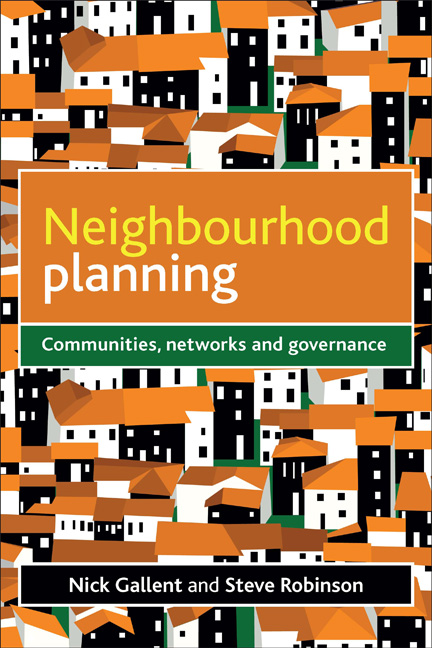Book contents
- Frontmatter
- Dedication
- Contents
- List of figures, images and table
- Abbreviations
- Acknowledgements
- Authors’ note
- Part One Democracy, planning and localism
- Part Two Capacity building and community-based planning
- Part Three The interface with policy actors
- Part Four Neighbourhood planning, leadership and democratic renewal
- References
- Index
seven - Community dynamics and planning
Published online by Cambridge University Press: 07 September 2022
- Frontmatter
- Dedication
- Contents
- List of figures, images and table
- Abbreviations
- Acknowledgements
- Authors’ note
- Part One Democracy, planning and localism
- Part Two Capacity building and community-based planning
- Part Three The interface with policy actors
- Part Four Neighbourhood planning, leadership and democratic renewal
- References
- Index
Summary
Neighbourhood planning is rooted in community dynamics, in the relationships and interactions that bind people together. These interactions may create what Tönnies (1887) described as a ‘unity of will’ and a sense of shared identity (see also Cohen, 1985), although they can also be a source of division, as fractures form between competing groups and diverse interests (Panelli, 2006). Broadly, communities are constituted of networks of social exchange and it is through these networks that community action is realised, often grounded in the emergence of ‘community leaders’ and in the coalescence of groupings that play a key role in catalysing interest around planning, development and broader service issues. In this chapter, we examine these groupings and these dynamics within the case study communities, drawing out the context for neighbourhood planning. This chapter also elaborates on the catalysts for, and motivating factors behind, community-based planning: who drives the process and who is co-opted or selected to move things forward. It presents an initial view of 10 communities from the perspective of groups, always including the parish clerk, tied to the parish councils. These are not necessarily viewed as primary nodes within local networks, but as practical entry points into communities, which is what they proved to be for the purposes of the study.
The study parishes
Throughout the chapters that follow, parishes are referred to using a notation that is designed to conceal their identities. Some of the information and views relayed by these ‘parish groups’ (PGs) was clearly confidential and not for public dissemination. For this reason, the 10 study parishes are referred to as ‘PG1’ to ‘PG10’. Sometimes the identity of parishes is revealed in the narratives and quotations presented. Where this clearly does not infringe on confidentiality, no attempt is made to conceal their identity. The case study parishes are shown in Figure 7.1 How community activism is triggered within different places is inevitably affected by the different experiences of the parishes. This issue is examined later in this chapter. On occasions, community activity gestates slowly as interest in local issues takes root; but sometimes it happens suddenly as passions are inflamed and communities seek to right what they view as great wrongs.
- Type
- Chapter
- Information
- Neighbourhood PlanningCommunities, Networks and Governance, pp. 79 - 94Publisher: Bristol University PressPrint publication year: 2012



